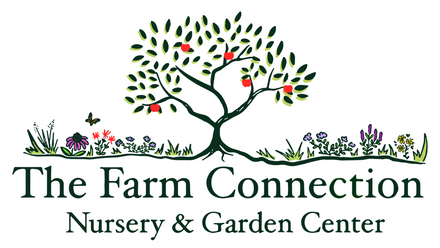Hawthorn, Washington, Bare Root
Native Tree with Winter Fruit & Bird Habitat
Hawthorn, Washington, Bare Root - Bare Root / 6-18" Seedling is backordered and will ship as soon as it is back in stock.
Couldn't load pickup availability
Delivery and Shipping
Delivery and Shipping
Make sure to thoroughly review our entire "Shipping, Returns, Refunds, and Our Guarantee" page for all relevant details about ordering from our store.
Making a purchase from our store constitutes an agreement to all the conditions outlined in those policies.
We appreciate your support and look forward to being your favorite plant provider!
Subscribe to our newsletter
Sign up for exclusive offers.
Hawthorn, Washington (Crataegus phaenopyrum)
Washington Hawthorn is a small, ornamental native tree known for its striking seasonal interest and tremendous ecological value. Native to the southeastern United States and widely adapted across eastern North America, this species offers dense white blossoms in early summer (later than most hawthorns), followed by glossy green foliage that turns orange to red in fall. Its bright red fruit (technically haws) persist well into winter and serve as a vital food source for birds, especially cedar waxwings, robins, and thrushes.
Tolerant of urban pollution, drought, and a wide range of soils, Washington Hawthorn is an excellent choice for native hedgerows, meadow edges, streambank restoration, and regenerative landscapes. The dense, thorny growth also provides important cover and nesting habitat for songbirds. Its fruits are edible for humans and have been used traditionally in herbal medicine for cardiovascular support, making it a multifunctional native species for farms, food forests, and ecological plantings.
Key Characteristics
-
High wildlife value for birds and pollinators
The late-spring flowers provide nectar for bees, native solitary bees, and other pollinators, while the persistent red fruit feeds birds well into winter. Dense branching offers protective cover and nesting habitat. -
Traditional medicinal uses
The berries (haws) have been used in traditional Western herbalism as a heart tonic — often made into teas, tinctures, or syrups. Known for supporting cardiovascular health, they contain flavonoids and antioxidants. -
Extended seasonal interest
Attractive white flowers in June, glossy foliage, vibrant fall color, and bright red winter fruit make Washington Hawthorn a four-season standout. Its small size and ornamental form make it ideal for layered plantings. -
Tough and adaptable native species
Tolerates drought, compacted soil, and urban conditions once established. Great for erosion control, especially on slopes and streambanks, and useful in reforestation or windbreak plantings. -
Excellent in permaculture and silvopasture systems
Use as a multifunctional hedge or windbreak that provides wildlife support, fruit, and habitat. Its thorns and dense habit make it a good protective border plant for pasture or orchard edges.
Product Details
- Native range: Southeastern and Mid-Atlantic U.S., naturalized widely in eastern North America
- Plant life cycle: Deciduous tree
- Sun requirements: Full sun to part shade
- Soil requirements: Dry to medium; well-drained, tolerates clay
- Mature height: 20–30 ft
- Bloom time: Late spring to early summer (June)
- Bloom color: White
- USDA Hardiness zones: 4–8
Washington Hawthorn offers beauty, ecological benefit, and traditional herbal value in one compact native tree. Whether you're planting for wildlife, herbal harvest, or habitat restoration, it’s a resilient and rewarding choice.
-
Sun RequirementsFull Sun, Part Sun/Shade
-
Soil RequirementsMedium
-
Bloom ColorWhite
-
Bloom TimeMay, June
-
USDA Hardiness ZonesZone 4, Zone 5, Zone 6, Zone 7, Zone 8
-
Chill Hours1000
-
Native StatesWashington, Oregon, Idaho
Payment & Security
Payment methods
Your payment information is processed securely. We do not store credit card details nor have access to your credit card information.




